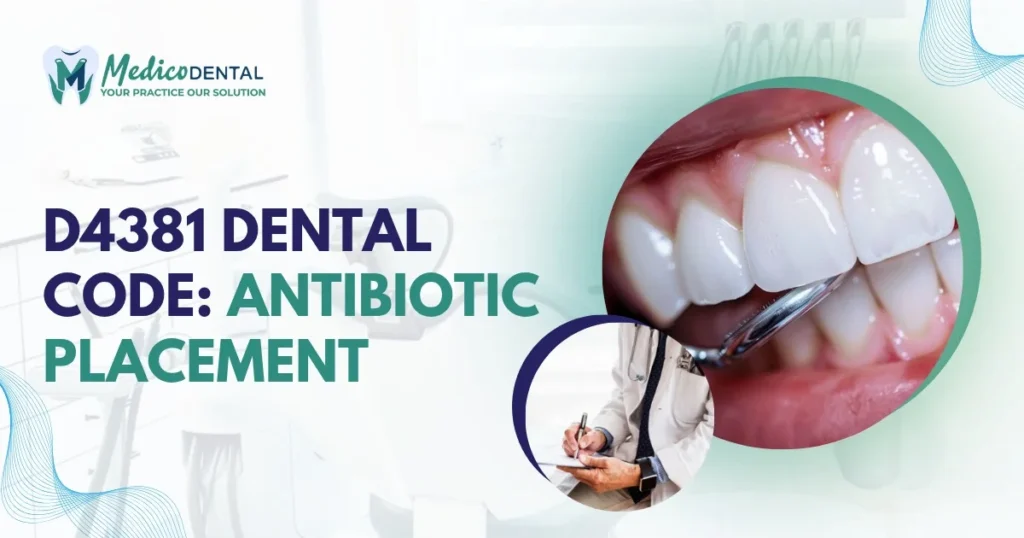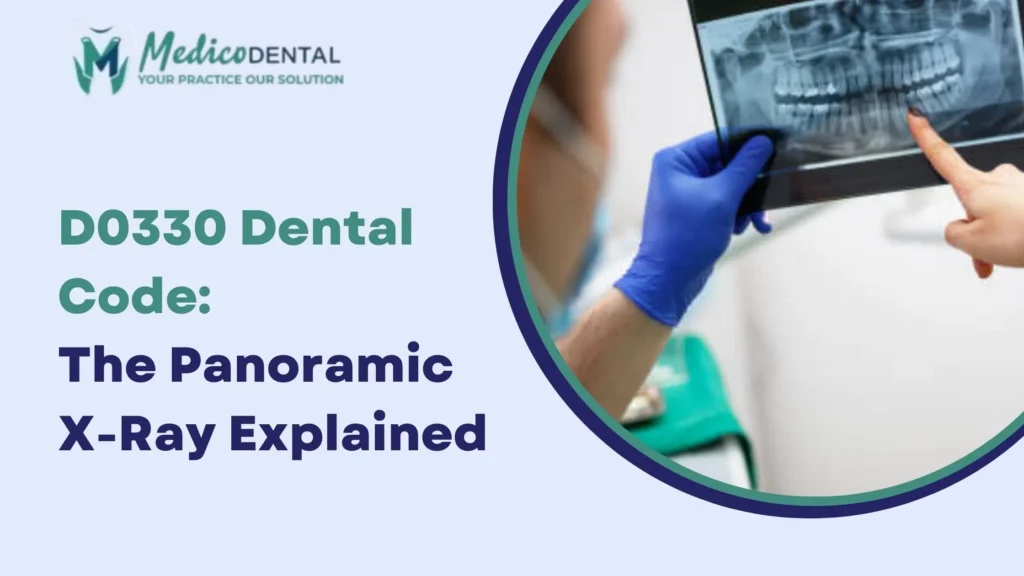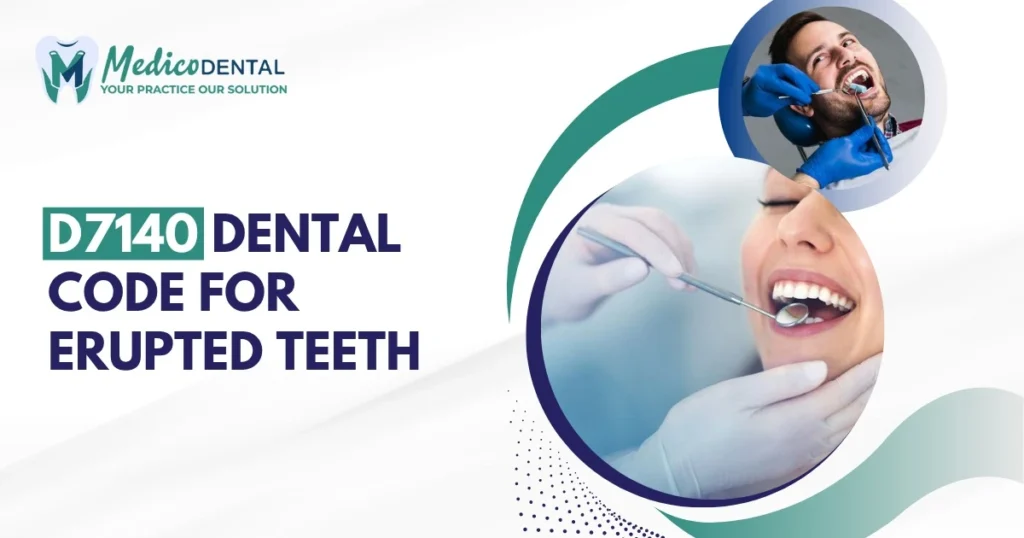Maintaining healthy gums is essential not only for a beautiful smile but also for overall oral health. Gum disease, also known as periodontal disease, can lead to tooth loss and other health complications if left untreated. The D4381 dental code represents a modern approach in dentistry that focuses on treating localized gum infections with targeted antimicrobial therapy. This procedure helps eliminate harmful bacteria deep within gum pockets, reducing inflammation and promoting healing.
What Is the D4381 Dental Code?
Definition and Purpose of D4381
The D4381 dental code refers to the “localized delivery of antimicrobial agents via a controlled release vehicle into diseased crevicular tissue, per tooth.” In simpler terms, it means applying a special antibiotic or antimicrobial medication directly into gum pockets where bacteria are causing infection.
The main purpose of this treatment is to address gum disease that remains active even after deep cleaning procedures like scaling and root planing. It offers a focused approach to control bacterial growth, minimize inflammation, and enhance the healing process. By targeting specific areas, this procedure avoids the need for systemic antibiotics, reducing the risk of side effects while improving localized results.
Why It Matters in Periodontal Treatment
Periodontal treatment aims to restore gum health and prevent further damage to the tissues that support teeth. While regular cleanings remove plaque and tartar above and below the gum line, bacteria can still linger in deeper pockets. The D4381 procedure becomes essential in such cases because it directly attacks these stubborn bacterial colonies.
This targeted treatment supports gum healing, decreases bleeding, and helps maintain the stability of teeth. For patients with ongoing gum inflammation or infection, it offers a less invasive, yet highly effective, option for improving periodontal outcomes.
The Role of D4381 in Gum Disease Management
How Antimicrobial Agents Work in Periodontal Pockets
Antimicrobial agents used under the D4381 code are designed to combat the bacteria that thrive in periodontal pockets. When applied, these agents slowly release medication over several days, keeping the bacteria count low and allowing gums to heal naturally.
Unlike oral antibiotics that circulate through the entire body, localized antimicrobial treatment focuses solely on infected sites. This ensures higher effectiveness and reduces unwanted systemic exposure. The sustained release helps control bacterial regrowth and allows the gum tissue to reattach more firmly to the tooth surface.
Conditions That Qualify for D4381 Use
The D4381 code is typically used for patients diagnosed with active periodontal disease, especially when infection remains localized after conventional treatments. Dentists often recommend it when:
- Pockets around the teeth are deeper than 5mm
- Persistent bleeding or inflammation continues after scaling and root planing
- There are specific sites with localized infection rather than widespread disease
This code is not used for preventive cleaning but rather for therapeutic intervention where bacterial control is essential to preserve gum and bone health.
Step by Step Overview of the D4381 Procedure
Preparation Before the Treatment
Before performing the D4381 procedure, the dental professional thoroughly examines the gums and measures pocket depths using a periodontal probe. This helps identify the exact locations of infection. Typically, the area is cleaned through scaling and root planing (SRP) to remove tartar and bacterial buildup first.
Once the area is clean and dry, it is ready for localized antimicrobial application. The dentist ensures that no active bleeding or debris is present, as that could interfere with medication placement.
Application Process of the Antimicrobial Agent
During the procedure, the dentist or hygienist uses a small syringe like applicator to deliver the antimicrobial agent into the infected gum pocket. The material adheres to the tissue and gradually releases the medication over time.
One of the most commonly used products for this procedure is Arestin, which contains minocycline hydrochloride, a powerful antibiotic effective against periodontal bacteria. The application process is quick, comfortable, and does not require anesthesia.Immediately a patient can resume normal routine once treatment is done.
Post Treatment Care and Healing Timeline
After receiving the D4381 treatment, patients should follow specific post care instructions to promote healing. They are usually advised to avoid brushing or flossing the treated area for about 7 to 10 days, as disturbing the site can dislodge the medication. Soft foods and gentle rinsing are recommended during this period.
Mild tenderness or gum sensitivity may occur, but it typically subsides within a few days. Over the next several weeks, the gums begin to heal, inflammation reduces, and pocket depth gradually decreases. A follow up appointment allows the dentist to assess healing progress and determine if additional treatment is needed.
Materials and Agents Used in D4381 Treatment
Arestin and Other Commonly Used Antimicrobial Agents
The most popular material used in D4381 procedures is Arestin, which comes in the form of microspheres that slowly release antibiotics. It’s placed directly into the infected gum pocket, where it continues working for several days.
Other agents may include:
- Atridox (doxycycline hyclate) a gel that solidifies in the pocket and releases antibiotic gradually
- PerioChip (chlorhexidine gluconate) a small biodegradable chip that fights bacteria over time
- Actisite (tetracycline fiber) a thin fiber placed into the pocket that releases antibiotics continuously
Each of these options offers controlled release, ensuring effective and sustained antibacterial action for optimal healing.
How Controlled Release Technology Works
Controlled release technology allows these antimicrobial agents to work continuously without requiring repeated applications. Once inserted into the gum pocket, the material adheres to the soft tissue and begins dissolving slowly.
This ensures that bacteria are suppressed for an extended period often up to two weeks without the patient needing to take oral antibiotics. The localized nature of the treatment provides maximum effectiveness with minimal side effects, making it a preferred option for managing moderate to severe gum disease.
D4381 vs Scaling and Root Planing
Why D4381 Is an Adjunct Procedure
It’s important to understand that D4381 is not a standalone treatment but an adjunct to scaling and root planing. While SRP removes plaque and tartar, it may not eliminate all bacteria hiding deep within gum pockets. D4381 enhances the outcome of SRP by delivering antimicrobial medication directly to those areas.
This dual approach ensures that both the mechanical and bacterial aspects of gum disease are effectively addressed. Together, these treatments promote better gum attachment and long term oral stability.
When to Combine D4381 with SRP
Dentists usually recommend combining D4381 with SRP when deep pockets remain after initial cleaning or when signs of infection persist. It’s especially useful for patients who have:
- Persistent bleeding or inflammation after SRP
- Isolated deep pockets in certain areas
- Difficulty maintaining oral hygiene due to gum sensitivity
By combining these procedures, dental professionals can reduce the risk of periodontal disease progression and improve long term treatment success. The result is healthier gums, reduced pocket depth, and better overall oral health.
Understanding Insurance Coverage and Reimbursement for D4381
Understanding how dental insurance handles the D4381 dental code is vital for both patients and dental providers. Since this procedure involves localized antimicrobial delivery, insurance carriers often view it as an adjunctive or supportive therapy rather than a primary treatment. Knowing what documentation is needed and how to submit accurate claims ensures smoother reimbursements and fewer delays.
How Dental Insurance Handles D4381 Claims
Dental insurance coverage for D4381 can vary widely depending on the provider and the specifics of a patient’s plan. Many insurers recognize D4381 as a valid procedure under periodontal therapy, but it is usually covered only if it’s performed in conjunction with scaling and root planing (SRP).
To qualify for reimbursement, documentation must prove medical necessity. This means showing that deep pockets and persistent gum inflammation exist despite previous non surgical therapy. Most insurance carriers require detailed clinical notes, including:
- Periodontal charting showing pocket depths greater than 5mm
- Clear evidence of infection or bleeding upon probing
- Documentation that D4381 was performed after or alongside SRP
It’s also essential for patients to understand that some plans limit coverage for D4381 to specific products like Arestin or Atridox. Others may only cover treatment for a certain number of teeth per visit. Confirming these details before the appointment helps avoid unexpected out of pocket costs.
Tips for Accurate Coding and Documentation
Accurate dental coding and thorough documentation are key to successful D4381 claim submissions. Dental billing errors often lead to claim rejections, even when the treatment is clinically appropriate. To ensure proper reimbursement, dental professionals should:
- Record the tooth number and site treated
- Include periodontal charting and notes about infection persistence
- Specify the product name, dosage, and batch number of the antimicrobial used
- Indicate that the procedure was performed in conjunction with SRP, not as a standalone service
Using precise and compliant documentation supports claim approval and reflects professional credibility. Proper coding also ensures transparency with insurance carriers, protecting both patients and providers from unnecessary billing complications.
Benefits of the D4381 Dental Code Procedure
The D4381 dental code procedure offers numerous clinical and practical benefits for both patients and dental providers. It enhances periodontal therapy outcomes, reduces bacterial activity, and supports gum healing without the need for surgical intervention. Patients who undergo this treatment often experience noticeable improvements in oral comfort, tissue health, and long term stability.
Reduction of Bacteria and Inflammation
The most immediate benefit of D4381 lies in its ability to control bacterial infection directly at the source. By placing antimicrobial medication inside infected gum pockets, the treatment eliminates bacteria that standard cleaning cannot reach. This localized delivery ensures prolonged antibacterial action, allowing the gums to heal naturally.
Patients often notice:
- Reduced redness and swelling
- Less bleeding during brushing or flossing
- Fresher breath due to decreased bacterial load
This decrease in inflammation not only enhances gum health but also helps protect the underlying bone and tooth support structures from further damage.
Improved Gum Health and Pocket Depth Reduction
Another significant advantage of D4381 treatment is its contribution to pocket depth reduction. Deep periodontal pockets are one of the main signs of gum disease progression. When D4381 is used in combination with scaling and root planing, it helps shrink these pockets, enabling gums to reattach more firmly to the teeth.
Improved pocket depth translates to easier cleaning, reduced infection risk, and better long term oral stability. For patients seeking a non surgical solution to manage gum disease, D4381 provides both therapeutic effectiveness and lasting comfort.
Limitations and Considerations
While the D4381 dental code offers several benefits, it is not suitable for every patient or situation. Understanding its limitations helps ensure that it is used appropriately and effectively as part of a broader periodontal care plan.
When D4381 May Not Be Recommended
Dentists evaluate each patient’s condition before recommending D4381. This treatment may not be appropriate if:
- The patient has generalized advanced periodontal disease requiring surgical therapy
- There is a known allergy to the antimicrobial agent used (such as minocycline or doxycycline)
- The infection is systemic or extends beyond localized areas
- The patient cannot maintain good oral hygiene following treatment
In these cases, alternative periodontal therapies may be more effective or necessary for long term oral health improvement.
Common Challenges in Claim Approvals
Insurance claim denials for D4381 often occur due to incomplete documentation or incorrect code usage. Common issues include missing periodontal charting, using D4381 as a substitute for scaling and root planing, or lack of site specific treatment notes.
To avoid denials, dental offices should ensure that every claim includes proper clinical evidence and coding accuracy. Patients should also review their insurance benefits beforehand to confirm eligibility and coverage limitations. Proactive communication between the dental office and the insurer can save time, frustration, and financial surprises.
The Importance of Accurate Dental Coding
Accurate use of the D4381 dental code is crucial not only for proper insurance reimbursement but also for maintaining compliance with dental billing regulations. Precise coding ensures that the treatment provided is clearly documented, medically justified, and billed appropriately.
How Proper Use of the D4381 Dental Code Affects Reimbursement
Correct coding directly impacts claim approval rates and reimbursement amounts. When D4381 is documented properly with clear clinical notes, supporting evidence, and appropriate linkage to SRP insurance carriers are more likely to approve the claim without delay.
This accuracy benefits everyone involved:
- Patients receive transparent billing and maximize insurance benefits
- Providers maintain financial efficiency and avoid costly claim rejections
- Insurers process claims faster with verified clinical justification
Proper use of D4381 not only ensures fair payment but also demonstrates professionalism and compliance within the dental practice.
Compliance and Documentation Best Practices
For dental offices, compliance begins with accurate recordkeeping and adherence to CDT (Current Dental Terminology) guidelines. Best practices include:
- Documenting the tooth number and site where treatment was performed
- Recording pocket depths and signs of infection before and after therapy
- Listing antimicrobial product details, including dosage and lot number
- Ensuring that D4381 is billed as an adjunct, not a replacement for SRP
Following these standards promotes transparency, ethical billing, and smooth insurance communication. It also helps uphold the integrity of dental records, ensuring both patient trust and regulatory compliance.
Summary
The D4381 dental code plays a critical role in modern periodontal therapy, offering a minimally invasive solution to persistent gum infections. By delivering antimicrobial medication directly into the affected gum pockets, this treatment helps reduce bacteria, control inflammation, and restore gum health more effectively than standard cleaning alone.
For patients, it represents a comfortable, safe, and efficient way to enhance healing and protect long term oral health. For dental professionals, accurate documentation and proper billing practices ensure timely reimbursement and professional integrity.
Ultimately, the D4381 dental code bridges the gap between clinical precision and patient centered care helping both patients and providers achieve optimal outcomes in periodontal health management.
FAQs
What is the D4381 dental code?
Ans. It’s a procedure for applying antimicrobial medication directly into gum pockets to treat localized periodontal infections.
When is the D4381 procedure recommended?
Ans. It’s used when gum infection persists after scaling and root planing, especially in pockets deeper than 5mm.
Is the D4381 treatment painful?
Ans. No, it’s a gentle and minimally invasive procedure that requires no anesthesia.
What medication is used in the D4381 procedure?
Ans. Common agents include Arestin, Atridox, and PerioChip, which release antibiotics over time.
How long do D4381 results last?
Ans. The antimicrobial effect lasts about two weeks, but gum health improvements can last several months.



